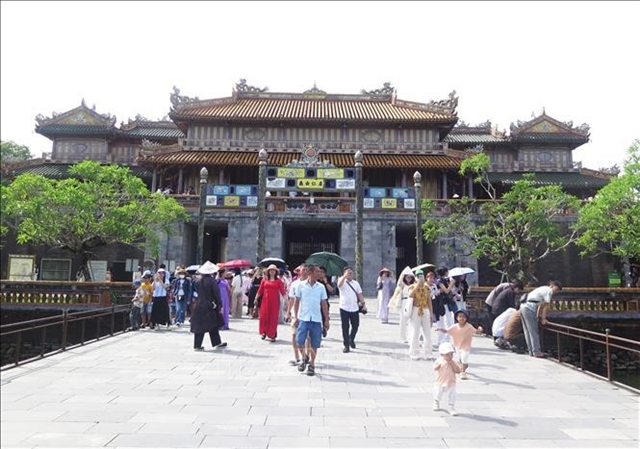 Life & Style
Life & Style

Having been the subject of many pieces, a great artist's muse now paints the artist.
BY NGUYỄN BÌNH
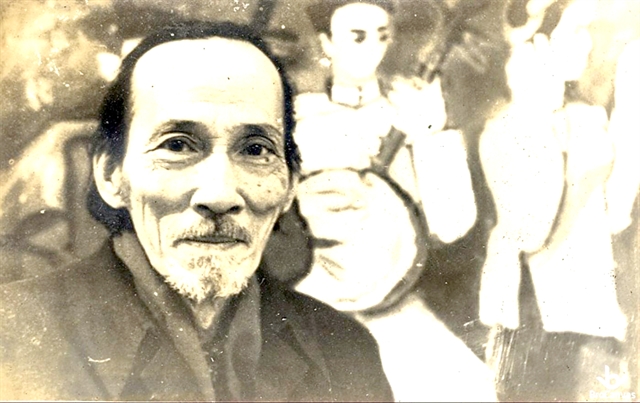
|
| INFLUENTIAL: Artist Bùi Xuân Phái. Photo brocanvas.com |
Artist Bùi Xuân Phái wouldn’t give too much thought to his upcoming 100th birthday if he was still alive, instead creating new paintings of Hà Nội streets as his gift to the fight against COVID-19.
In this year marking the 75th anniversary of the August Revolution (August 19, 1945) and National Day (September 2, 1945), activities held in celebration have been noticeably absent due to social distancing.
But a variety of individuals and organisations will nonetheless observe Phái’s 100th in their own way, such as artist Văn Dương Thành and the Vietnam News Agency’s Thể Thao Văn Hóa (Sport and Culture) daily.
In life, Phái (1920-1988) was widely admired for his paintings of Hà Nội’s ancient streets, collectively known as Phố Phái (Phái Street).
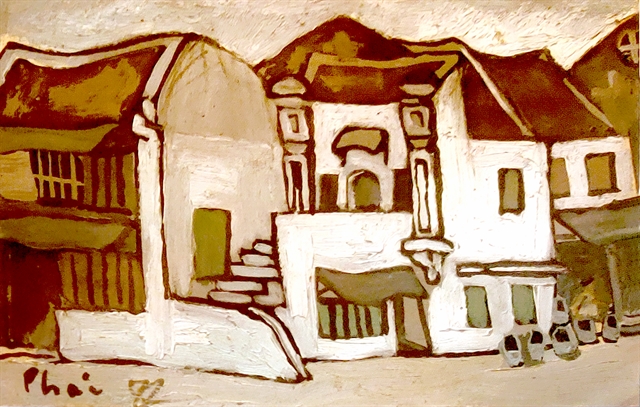
|
| AROUND TOWN: Hàng Chĩnh Street, 1972, oil on cardboard, 10.5cm by 15.5cm, by Bùi Xuân Phái, from Văn Dương Thành's collection. VNS Photos Đoàn Tùng |
He and college classmates such as Dương Bích Liên and Nguyễn Tư Nghiêm were popular in the mid-20th century, boasting their own painting styles. Liên was known for paintings of young girls, while Nghiêm found fame from works with a chèo (traditional opera) theme.
To commemorate Phái’s birthday on September 1, Thành plans to showcase Phái’s paintings and her paintings of Phái at her home, with a limited number of attendees.
Also in the pipeline is an exhibition at the Việt Nam National Institute of Culture and Art Studies, with about 200 on the guest list, though the pandemic has put that on hold for the time being.
Space considerations mean that not all 100 of her paintings of Phái will be on display at her home. Only 30 of her works are to be hung, as will 20 of Phái’s from her collection.
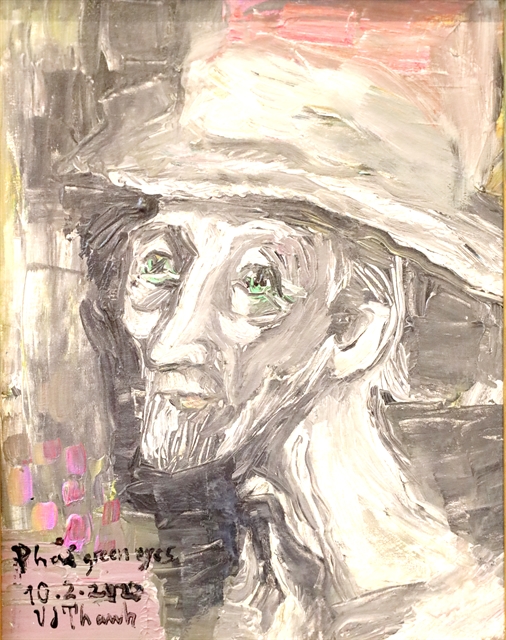
|
| THE MAN: A portrait of Bùi Xuân Phái by Văn Dương Thành. |
Thành was not only one of Phái’s friends but was also his muse, featuring in about 300 portraits all up, some of which found their way into her own collection.
She remembers the first time they crossed paths, feeling fortunate to meet such a well-known artist while still at the Việt Nam Fine Arts University.
That was one afternoon in 1967. Her older brother had taken her to his friend’s home, where Phái was also paying a visit.
To his surprise, she greeted him by name, and in turn he asked how she knew who he was.
She told him how she very much liked the illustrations he and the composer of Vietnam’s national anthem Văn Cao had published in the Văn Nghệ (Literature and Arts) newspaper. So much so she had spent some of her savings on buying the edition and putting the cut-out illustrations in her collection.
His touching smile -- that moment -- sealed a friendship that would last for over twenty years.
And since relationships were at the heart of Phái’s artistic practice, many of his works originated in encounters with Thành. He painted her whether she was modelling for him or not.
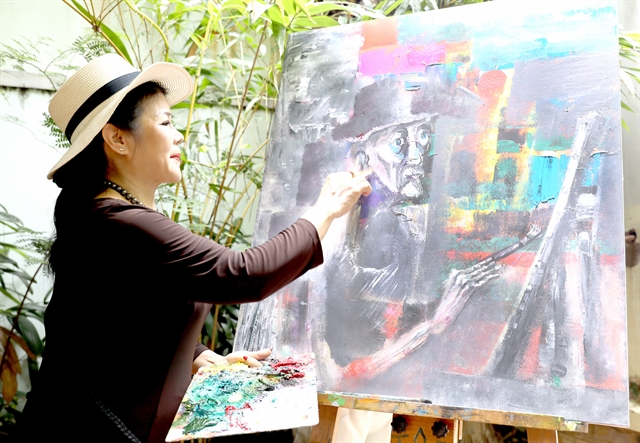
|
| EYE REVERSED: Văn Dương Thành completing her painting of Bùi Xuân Phái. |
“I was always a willing model, enjoying every painting he created regardless of the mood or character he captured or portrayed,” Thanh said. “I understood that I inspired him to express his feelings.”
“I always remember the artist as a teacher, though I was never a student of his. He was known for his oil-on-canvas paintings of Hà Nội’s old streets, and was a master of creating refined yet intense colours in works that left an impression on those who saw them.”
One of the portraits he painted of her wearing a red blouse proved to be a fond memory for both artist and model.
Phái and one of his friends visited Thành’s brother one evening in 1975. He was quickly bored by the political talk that always seemed to dominate any gathering during that turbulent year in Việt Nam’s history, and so went to see Thành to look at her latest paintings instead.
In his dazed, somewhat drunken state, he expressed a desire to paint even though it was well past midnight.
“I brought him colours and a canvas,” she recalled. “He drew quickly. I thought then he was inspired by the red blouse under the moonlight.”
On a 65cm by 55cm canvas, he captured Thành brushing her hair and the delicate sophistication of womanhood. A painting that perfectly exemplified the swift subtlety with which he could depict the essence of a moment.
Phái was born in the capital, in Vân Canh Commune in Kim Hoàng Village, Hà Đông District. His village was a cradle of folk paintings of the same name, and he went on to graduate from the Indochina Fine Arts College in 1945.
He was among the last of the students from the college to make a major impact on Việt Nam’s fine arts scene.
His first painting of Hà Nội streets was Phố Hàng Phèn (Phèn Street) in 1940, before he entered college. It was sent to an exhibition in Tokyo, where it was sold.
Phái actually held two solo exhibitions, but most people only know of one, in December 1984.
That exhibition was held at the Việt Nam Fine Arts’ Exhibition House on Ngô Quyền Street. It was seen as a milestone in Vietnamese fine arts, because at the time -- well before Việt Nam undertook its process of “renewal” -- individuals were discouraged from holding art or cultural activities, according to art critic Nguyễn Quân.
“The opening of the exhibition was a moving experience,” Quân recalled.
“His works were of Hà Nội streets, portraits, still lifes, and abstract paintings. His simple, slightly distorted style was not as ‘popular’ as the four ‘main’ themes of artists -- workers, farmers, soldiers, and leaders.”
“But the exhibition went some way to curbing the exclusivity of certain themes and of collectivism. It honoured the individual and recognised an early form of ‘renewal’ in art that was Westernised.”
As for that other exhibition, it was actually his first, held at his home long before 1984 and where he invited friends and colleagues such as Thy Thy Tống Ngoc, Tạ Tỵ, and Nguyễn Tiến Chung to come and take a look.
On display were about 30 oil-on-canvas and gouache paintings, in nudes and still lifes with themes of youth, nature, and maternity. Collectors Phạm Văn Kỳ and Phạm Chi Lương were quick to snap some of them up.
Phái’s influence over Vietnamese modern art looms large. Together with his classmates Liên, Nghiêm, and Nguyễn Sáng, he set an important benchmark for Vietnamese modern art with works throughout the 1950s.
“His influence will last forever,” Thành believes.
“There won’t be another artist like Phái for another hundred years. He was calm and quiet. He never argued or spoke about big topics, but through his paintings we can see his will and his creativity.”
He was posthumously honoured with the Hồ Chí Minh Prize in Literature and Arts, in 1996, and won other national fine arts awards, a Hà Nội fine arts award, and a Graphic Design award in Leipzig.
Two streets -- one in Hà Nội Nam Từ Liêm District and one in central Đà Nẵng city’s Hải Châu District -- bear his name.
He was commemorated last year with a doodle on google.com, on the occasion of his 99th birthday.
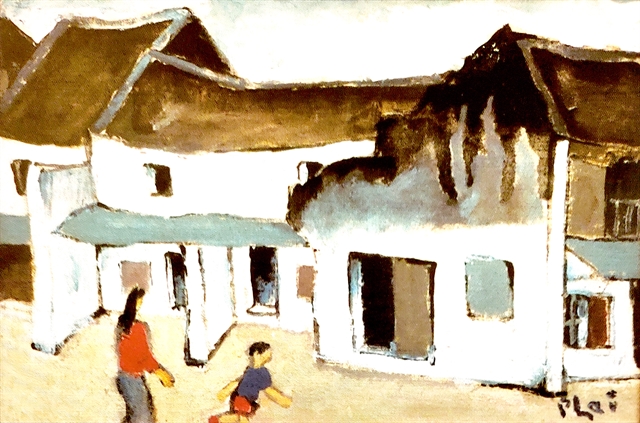
|
| DISTORTED LINES: Thuốc Bắc Street, 1970, oil on canvas, 16.5cm by 24cm, from Dương Văn Thành’s collection. |
In 2008 the Sport & Culture daily and Phái’s family launched an award called Giải Thưởng Bùi Xuân Phái Vì Tình Yêu Hà Nội (the Bùi Xuân Phái for The Love of Hà Nội Award), which respects and honours those individuals and organisations that leave a mark on society, culture, and the arts in Việt Nam’s capital.
Held annually, winners are normally announced at a ceremony in August, which this year is slated for October 10.
“The Bùi Xuân Phái Award means his creativity and contribution to Vietnamese modern art live on,” Thành said.
For her many paintings of Hà Nội streets, she hopes to pick up a nomination for the award next year. - VNS




